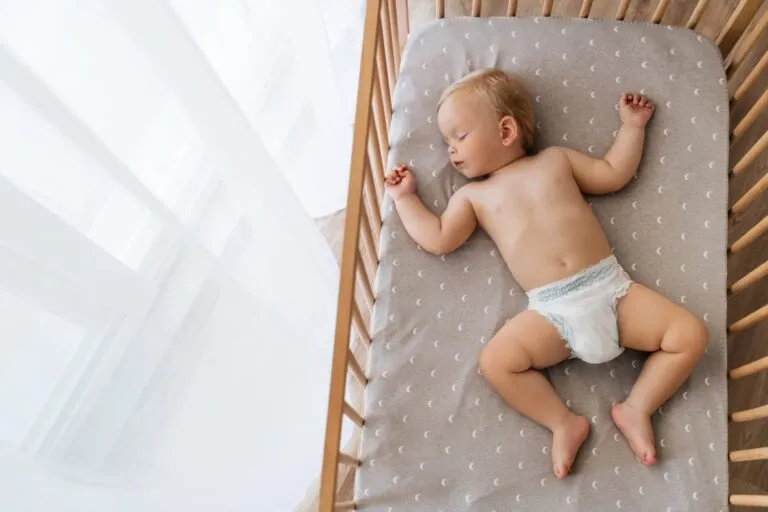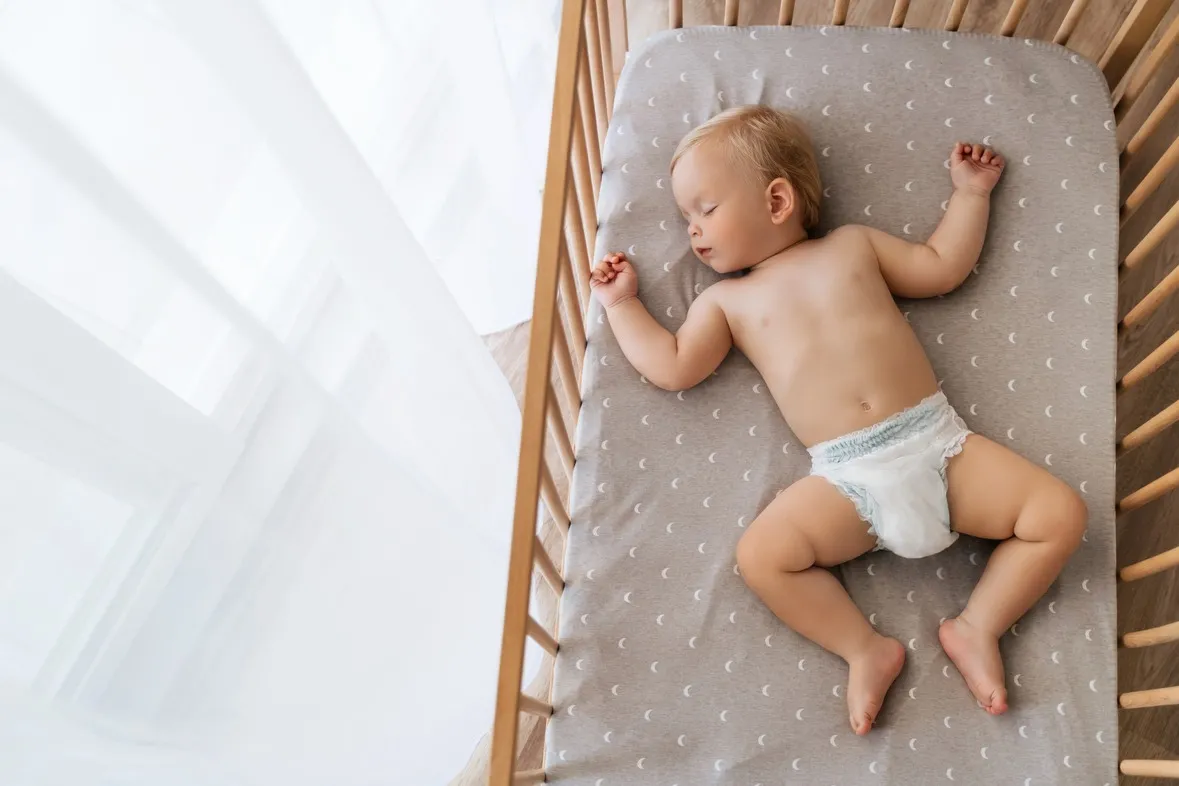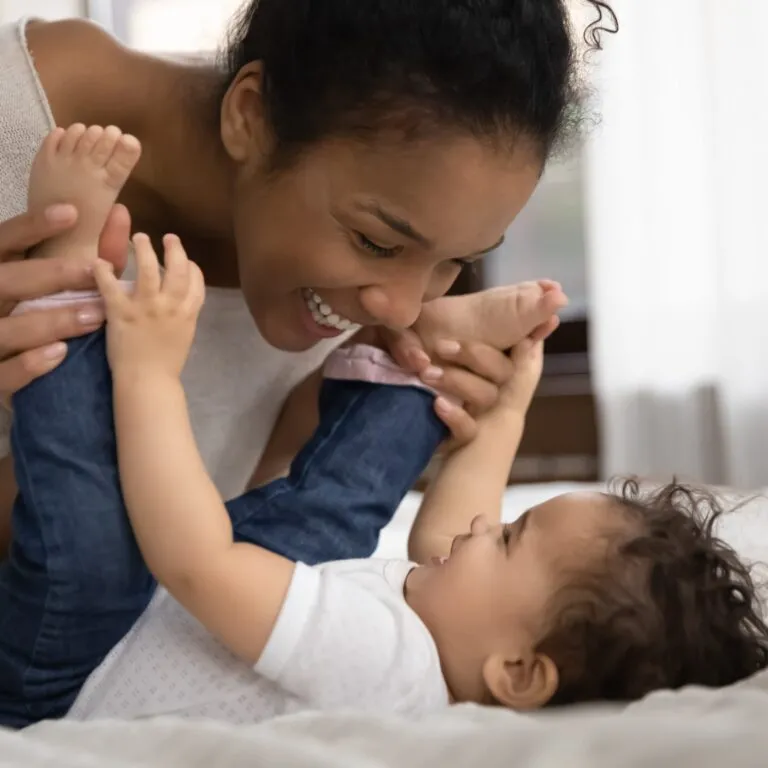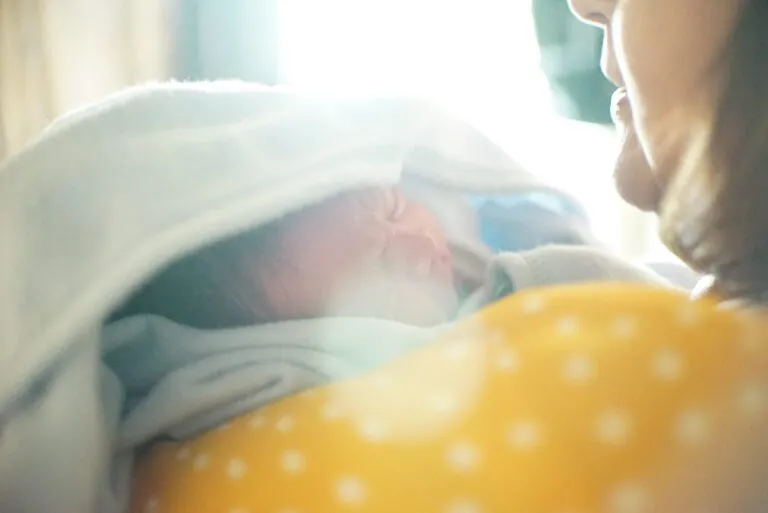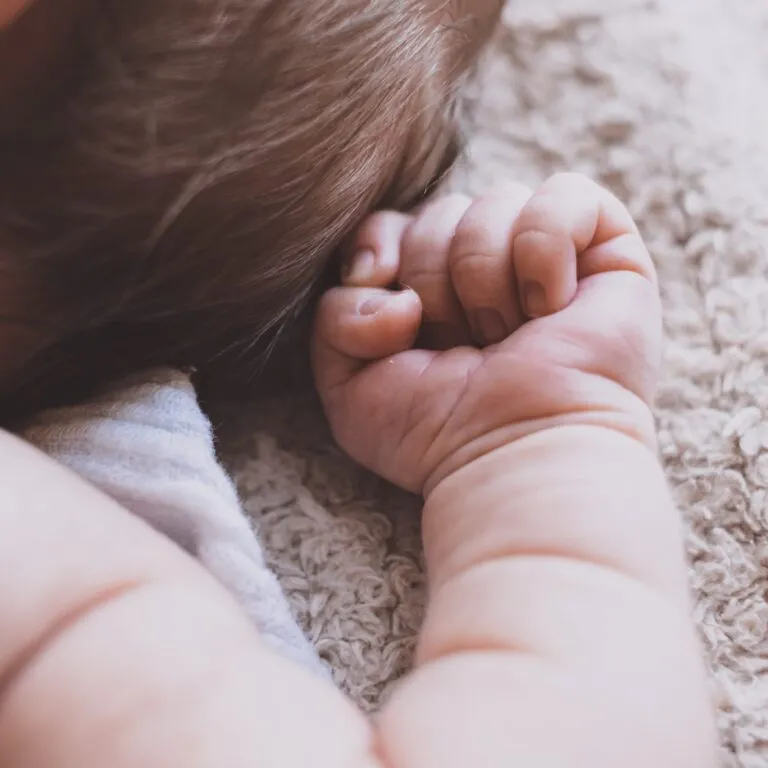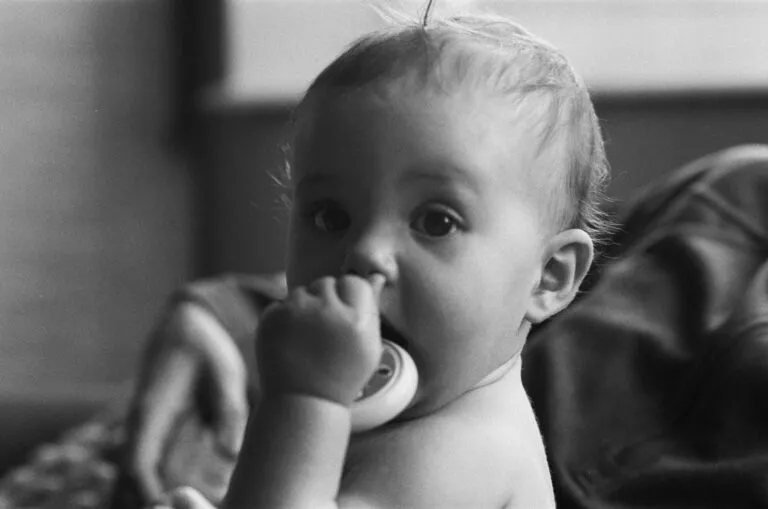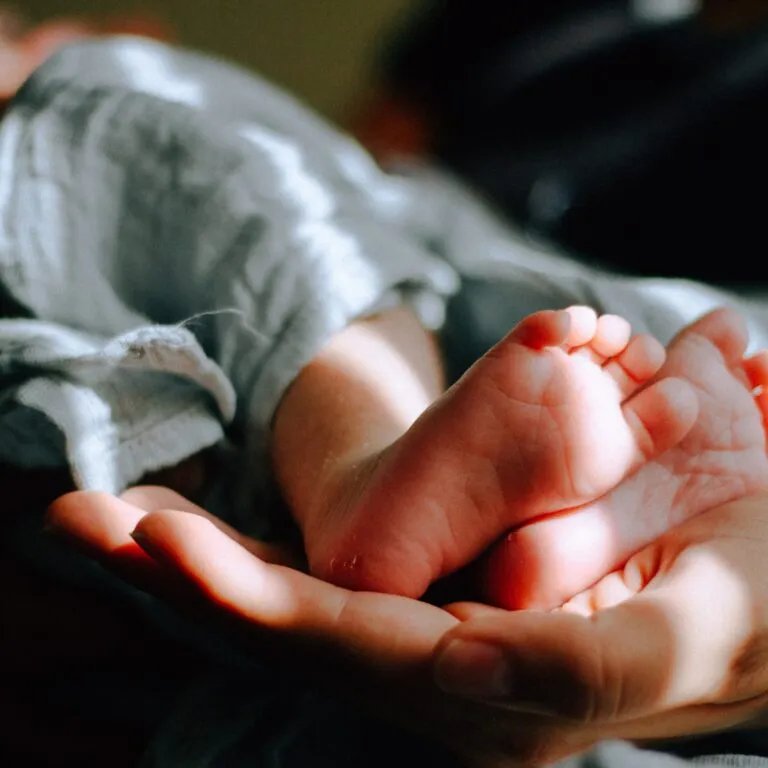All parents need to know how they can best reduce the risk of SIDS for their babies and ensure safe and healthy sleep.
“How are they sleeping?” – the question every parent dreads! Whether your little one is deemed a good or terrible sleeper, or just lies somewhere in between, newborn sleep is the big conversation starter at baby groups. In truth, there’s really only one big topic for parents of newborns, and that’s how to ensure that your baby is sleeping safely and that you’re able to get some rest yourself so that you can enjoy your new arrival’s awake time.
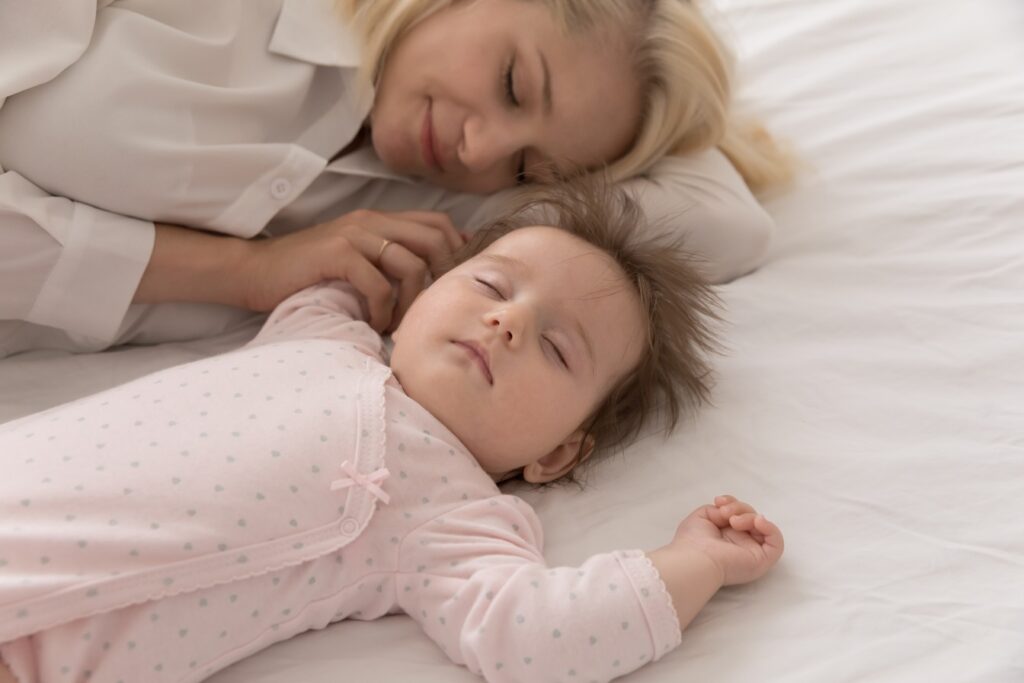
What are safe sleep practices for newborns?
As a new parent, safe sleep can feel like a minefield of what blankets to use, where the baby should sleep and how. The best way to think about it, especially in the newborn haze, is to keep it really simple with a few key points:
- Lay baby down on their back to sleep.
- Use a clean, firm mattress.
- Keep the sleep area clear from loose bedding, toys and bumpers.
- Baby should be in the same room as you when sleeping for the first 6 months.
These points do of course come with a few more questions, so here we’ve aimed to answer as many questions that you might have as possible.
Can I use blankets for my baby’s cot or bed?
A lightweight blanket such as a cellular blanket can be used for your little one. It is recommended to tightly tuck the blanket around the edges of the mattress over your baby up to chest height.
When using a blanket like this, baby should be placed flat on their back with “feet to the foot” of the cot, which means their head will rest somewhere in the middle of the mattress. This prevents the little one from wriggling down underneath their blankets and covering their head.
It is not recommended to use any type of weighted blanket, quilt or duvet. Young babies cannot regulate their body temperature as well as we can, so they’re more at risk of overheating. Newborns and young babies also do not need a pillow.
If you’re feeling concerned about blankets in the cot, a baby sleeping bag is a brilliant option. These are usually available for babies once they weigh about 4kg. They are available in different togs meaning there are options for every season.
Can I use cot bumpers or wedges?
The Lullaby Trust does not recommend cot bumpers or wedges. Their official line is “a clear cot is a safe cot”. Anything unnecessary inside the cot increases the risk of SIDS (Sudden Infant Death Syndrome) due to the increased risk of baby’s head being accidentally covered or putting baby into a position that they cannot get themselves out of.
The same goes for soft toys in the cot – the clearer the sleeping space, the better. Young babies do not need soft toys or additional items for comfort – the best thing you can do to comfort them is be in the same room whenever baby is sleeping, and be available whenever they need you. This can feel a little overwhelming at first, especially when your sleep is being interrupted for yet another time, but rest assured that babies’ sleep does settle down over time.
Can my baby sleep anywhere except the cot?
When parents learn that babies should be put to sleep on their backs on a firm mattress in a clear sleeping space, they do worry about their little one falling asleep elsewhere. Some babies struggle to fall asleep or stay asleep in a space like this, and all babies will at some point fall asleep while being held in parents’ arms, in the pushchair, or in the car seat. But is this safe?
The answer is that yes, these options can be safe if they are used correctly and you follow the guidelines. The most important factor is that you are always present when your infant is sleeping and that they are positioned flat on their back or as close to that as possible.
For newborns, the carrycot option on your pram is a safe lie-flat option as long as it is kept free of unnecessary additional items like loose blankets or toys. Some pushchair seats are designed with newborn inserts and can be made to lie-flat too.
Baby carriers, slings and wraps are another option for safe sleep for your little one for naps as long as they are used correctly following the TICKS guidelines:
- Tight
- In view at all times
- Close enough to kiss
- Keep chin off chest
- Supported back
Letting your baby sleep in a carrier can work perfectly for busy mums on the go, if your baby suffers with reflux and is better upright, or simply so that the two of you can bond.
If your little one is soothed to sleep in a car seat, as many of them are by the motion and road noise, this isn’t a problem, so long as they are not kept there for long periods of time. You should stop for frequent breaks to allow your baby to come out of the car seat, ideally every half hour. If possible, a second person should sit in the back to keep a close eye on them, or you can use a mirror so you can check them. Car seats should not be used as an alternative to a cot, so if it’s something that helps your little one fall asleep, you should move them to a safe sleeping space as soon as you are able to.
Sleep pods, swings and baby bouncers are not recommended as a safe sleeping space for babies due to the risk of the position that they are held in obstructing their breathing. They need a firm, flat surface for safe sleep. If your baby falls asleep in one of these products, you should move them to a safe sleeping space like their cot or a Moses basket.
Read more: A Guide to Food Allergies in Babies
Is cosleeping safe for my baby?
Some parents choose to cosleep with their baby, which means sharing a sleeping space. New parents may find that they end up cosleeping out of necessity too as young babies can struggle to sleep separately from a parent and want the comfort of being close. If you are worried that you may fall asleep while breastfeeding your baby, preparing your bed using the guidelines below will keep your baby safer and ensure that you’re able to get in the valuable sleep you need too.
Cosleeping can be done safely, as long as you follow the same guidelines for all safe sleep, plus a few extras:
- Baby should be put to sleep lying flat on their back on a firm, flat mattress.
- The sleeping space should stay clear from loose bedding or additional items.
- You or anyone else in the bed should not have drunk alcohol, smoked, or taken any drugs or medication which may make you more drowsy.
- If your baby was born prematurely or weighed under 2.5kg at birth.
- Make sure that there is no space where baby can get trapped, such as between the wall and mattress.
- Never cosleep anywhere that isn’t a bed, such as a chair or sofa as the risk of baby slipping into an unsafe position is higher.
- The safest position for you to sleep in with your baby is the C curl, where you are on your side, keeping your arm above baby and your knees below.
Is there anything I can do to protect my baby from SIDS?
The best way to protect your baby from SIDS is to keep a safe and clear bedspace, lay them to sleep on their back and to be near them throughout the course of the night as well as naps during the day time so that you can respond to their needs. There are a few other factors that can also reduce the risk:
- There is evidence to show that breastfeeding in the first 2 months of their life can reduce a baby’s risk of SIDS by half.
- Vaccinating your baby by the recommended NHS immunisation schedule can reduce the risk of SIDS.
- Not smoking during pregnancy or when the baby is born reduces the risk of SIDS.
Why does my baby wake up all night?
When you hear other parents talking about their baby sleeping through, it can feel really tough, especially if your baby is still waking hourly or more. There are many reasons why your baby wakes up in the night, which can vary from being hungry, needing their nappy changed or being too cold to simply just needing comfort. It is absolutely normal for your baby to wake up multiple times a night, and responding to them is the best thing you can do to help them to feel secure enough to go back to sleep. Babies’ sleep, especially at this age, is very different to ours, so their sleep cycles differ hugely and may cause them to wake, but this is actually a protective factor against SIDS too, so you can feel reassured that their bodies at this stage are doing what they need to do.
Rate this article:



